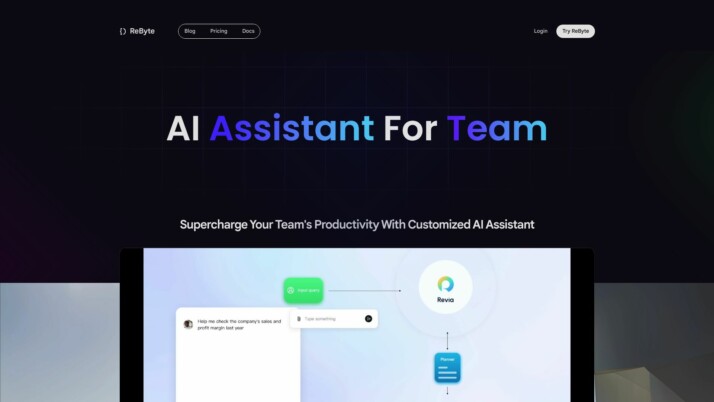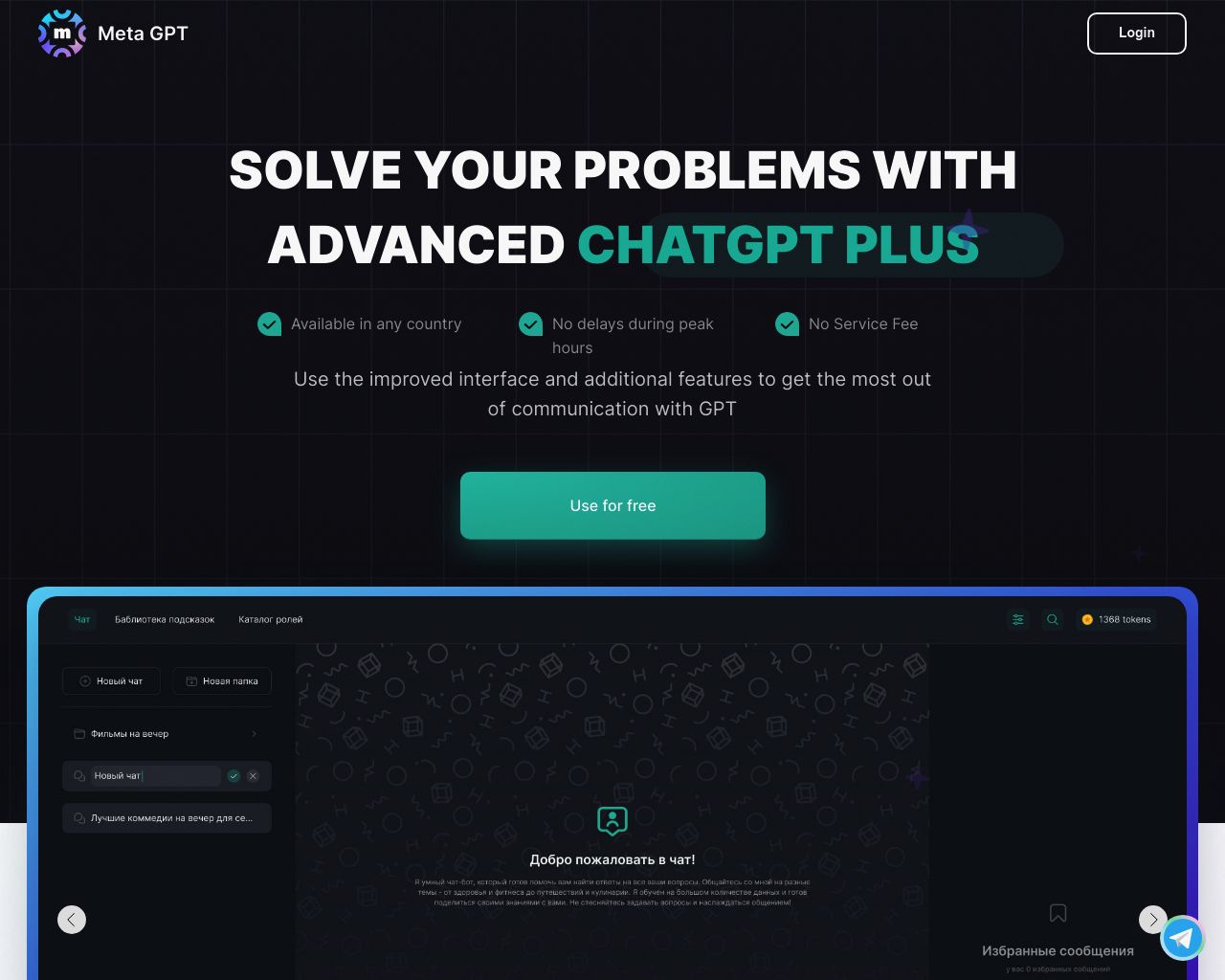Rebyte vs. MetaGPT: AI Agent Platforms Compared
AI agent development platforms are reshaping how businesses and developers create intelligent applications. Rebyte vs. MetaGPT, and SmythOS each offer unique approaches to building AI-powered solutions. Rebyte focuses on visual, no-code development for rapid prototyping. MetaGPT simulates software company structures using AI agents in specialized roles. SmythOS combines these strengths while adding advanced features like constrained alignment and hosted vector databases. This comparison explores how each platform tackles AI agent creation, deployment, and integration, helping you choose the right tool for your AI development needs.
Rebyte Overview
Rebyte empowers users to create AI-powered applications without extensive coding skills. The platform’s visual agent builder allows rapid development of customizable AI agents using large language models. Users can construct complex backend logic and fully customized user interfaces without writing code.


Rebyte empowers users to create AI-powered applications without extensive coding skills. The platform’s visual agent builder allows rapid development of customizable AI agents using large language models.
Rebyte’s serverless runtime handles hosting, orchestration, testing, and deployment of AI agents for both development and production environments. The platform integrates with private data sources and provides detailed observability into every step of an agent’s operations. This comprehensive approach streamlines the entire lifecycle of AI applications.
Key features include a no-code editor for building applications, support for autonomous agents, and the ability to deploy agents as APIs, webhooks, or chatbots. Rebyte also offers multi-agent collaboration capabilities, allowing complex workflows through group agents. The platform emphasizes scalability, security, and integration with existing systems through features like data encryption, OAuth support, and compatibility with various APIs and automation tools.
Rebyte caters to a wide audience, from developers and technical teams to non-technical professionals and AI enthusiasts. Its focus on democratizing AI development aligns with the growing trend of making advanced technologies accessible to users with varying levels of technical expertise. However, as with any AI platform, users should consider potential challenges such as data privacy concerns and the need for high-quality training data to ensure optimal performance.
MetaGPT Overview
MetaGPT revolutionizes multi-agent collaboration by combining human Standardized Operating Procedures (SOPs) with advanced Large Language Models (LLMs). This open-source framework simulates a software company’s structure, assigning distinct roles to AI agents such as product managers, architects, and engineers.


MetaGPT’s core philosophy, “Code = SOP(Team),” encodes human workflows into prompt sequences, improving output consistency and reliability. This approach significantly reduces errors typically associated with multi-agent systems, such as cascading hallucinations or logic inconsistencies.
MetaGPT revolutionizes multi-agent collaboration by combining human Standardized Operating Procedures (SOPs) with advanced Large Language Models (LLMs).
The platform breaks down complex tasks into manageable subtasks, each handled by specialized agents. This assembly line paradigm ensures each agent contributes its expertise to the overall project, resulting in more accurate and robust solutions. MetaGPT generates comprehensive documentation throughout the development process, including requirement documents, design artifacts, and interface specifications.
MetaGPT’s unique selling point lies in its ability to mimic and improve human collaboration processes within an AI framework. By incorporating SOPs and specialized roles, it ensures AI agents can work together efficiently, producing high-quality outputs that align with human standards. This approach not only enhances multi-agent system performance but also opens up new possibilities for AI application in complex, real-world scenarios.
While MetaGPT offers powerful capabilities, users should consider potential challenges. Integration complexity, especially with legacy systems, may require specialized knowledge. Scalability concerns could arise as data processing needs increase. Additionally, ensuring data privacy and security when handling sensitive information remains crucial, particularly in heavily regulated sectors.
Feature Comparison
Rebyte and MetaGPT offer distinct approaches to AI agent development, with notable differences in their core components and security features. Rebyte provides a visual agent builder and no-code editor, allowing users to create AI applications without extensive coding skills. This accessibility extends to its deployment options, supporting APIs, webhooks, and site chats. MetaGPT, in contrast, focuses on simulating a software company structure with AI agents assigned specific roles like product managers and engineers.
In terms of security, Rebyte emphasizes data encryption and OAuth support, crucial for enterprise-level deployments. MetaGPT’s approach to security is less explicitly defined in the available information. Rebyte’s integration capabilities appear more extensive, with support for various APIs, RPA tools, and data sources including PDFs and Word files. MetaGPT’s strength lies in its unique SOP-based collaboration model, potentially offering more sophisticated problem-solving capabilities in complex software development scenarios.
SmythOS stands out by offering a comprehensive suite of features that combines the strengths of both platforms. It provides a visual builder and no-code options like Rebyte, while also supporting complex multi-agent collaborations similar to MetaGPT. SmythOS goes further by offering advanced features such as constrained alignment, a hosted vector database, and an agent work scheduler, addressing gaps in both Rebyte and MetaGPT’s offerings. This makes SmythOS a more versatile and powerful option for users seeking a balance between ease of use and advanced AI capabilities.
Feature Comparison Table
| Rebyte | MetaGPT | SmythOS | |
|---|---|---|---|
| CORE FEATURES | |||
| Visual Builder | ✅ | ❌ | ✅ |
| No-Code Options | ✅ | ❌ | ✅ |
| Autonomous Agents | ❌ | ✅ | ✅ |
| Multimodal | ❌ | ✅ | ✅ |
| Multi-Agent Collaboration | ❌ | ✅ | ✅ |
| SECURITY | |||
| Constrained Alignment | ❌ | ✅ | ✅ |
| Data Encryption | ❌ | ✅ | ✅ |
| OAuth | ❌ | ✅ | ✅ |
| IP Control | ❌ | ❌ | ✅ |
| COMPONENTS | |||
| Huggingface AIs | ❌ | ✅ | ✅ |
| Classifiers | ❌ | ✅ | ✅ |
| Logic | ❌ | ✅ | ✅ |
| Data Lakes | ❌ | ❌ | ✅ |
| DEPLOYMENT OPTIONS (EMBODIMENTS) | |||
| Deploy as Webhook | ❌ | ✅ | ✅ |
| Staging Domains | ❌ | ❌ | ✅ |
| Production Domains | ❌ | ✅ | ✅ |
| API Authentication (OAuth + Key) | ❌ | ✅ | ✅ |
| Deploy as Scheduled Agent | ❌ | ✅ | ✅ |
| DATA LAKE SUPPORT | |||
| Hosted Vector Database | ✅ | ❌ | ✅ |
| Sitemap Crawler | ❌ | ❌ | ✅ |
| YouTube Transcript Crawler | ❌ | ❌ | ✅ |
| URL Crawler | ❌ | ✅ | ✅ |
Best Alternative to Rebyte and MetaGPT
SmythOS emerges as the superior alternative to Rebyte and MetaGPT, offering a comprehensive platform for AI agent development and deployment. Our drag-and-drop interface simplifies the creation of complex AI workflows, making advanced AI functionalities accessible to users with varying levels of technical expertise. We provide pre-built API integrations and support for a wide array of AI models, enabling seamless connection to various data sources and tools.
SmythOS emerges as the superior alternative to Rebyte and MetaGPT, offering a comprehensive platform for AI agent development and deployment.
Unlike Rebyte and MetaGPT, SmythOS excels in both ease of use and feature richness. Our platform supports multi-agent systems, allowing AI agents to collaborate on intricate tasks — a capability that surpasses Rebyte’s offerings. While MetaGPT focuses on simulating software company structures, SmythOS provides a more versatile approach, suitable for diverse industries and use cases.
We offer unparalleled deployment flexibility, allowing users to integrate AI solutions into existing systems effortlessly. SmythOS supports deployment across various platforms, including Google Vertex, Microsoft Copilot, and Amazon Web Services Bedrock. This versatility, combined with our robust security features like data encryption and OAuth support, makes SmythOS ideal for enterprise-level implementations.
SmythOS addresses critical gaps in both Rebyte and MetaGPT’s offerings. Our platform includes advanced features such as constrained alignment, ensuring AI behavior aligns with organizational goals, and a hosted vector database for efficient data management. The agent work scheduler and comprehensive logs and monitoring capabilities provide unmatched control and oversight, features not prominently available in Rebyte or MetaGPT.
By choosing SmythOS, users gain access to a powerful, user-friendly platform that combines the best of both worlds — the simplicity of visual building tools and the sophistication of advanced AI capabilities. Our solution empowers businesses to harness the full potential of AI, driving innovation and efficiency across various industries.
Conclusion
Rebyte and MetaGPT offer unique approaches to AI agent development, each with its own strengths. Rebyte’s visual builder and no-code editor democratize AI application creation, while MetaGPT’s SOP-based collaboration model simulates complex software development processes. Both platforms show promise in specific scenarios, with Rebyte excelling in rapid prototyping and MetaGPT in handling intricate, multi-step projects.
However, SmythOS emerges as the superior choice, combining the best aspects of both platforms while addressing their limitations. We provide a comprehensive suite of features that includes visual building tools, multi-agent collaboration, and advanced capabilities like constrained alignment and a hosted vector database. Our platform’s versatility shines through its support for various deployment options, from APIs and webhooks to site chats and scheduled agents.
SmythOS stands out with its focus on scalability, security, and seamless integration with existing systems. We offer a hosted environment for both development and production, ensuring smooth transitions from prototype to full-scale deployment. Our platform’s ability to handle multimodal interactions, complex problem-solving, and data lake support positions it as a robust solution for businesses of all sizes.
Experience the future of AI agent development with SmythOS. Create a free account to explore our platform’s capabilities, or dive into our comprehensive documentation to learn more about how SmythOS can transform your AI initiatives. Whether you’re a developer, business leader, or AI enthusiast, SmythOS provides the tools and flexibility you need to bring your AI vision to life.
Last updated:
Disclaimer: The information presented in this article is for general informational purposes only and is provided as is. While we strive to keep the content up-to-date and accurate, we make no representations or warranties of any kind, express or implied, about the completeness, accuracy, reliability, suitability, or availability of the information contained in this article.
Any reliance you place on such information is strictly at your own risk. We reserve the right to make additions, deletions, or modifications to the contents of this article at any time without prior notice.
In no event will we be liable for any loss or damage including without limitation, indirect or consequential loss or damage, or any loss or damage whatsoever arising from loss of data, profits, or any other loss not specified herein arising out of, or in connection with, the use of this article.
Despite our best efforts, this article may contain oversights, errors, or omissions. If you notice any inaccuracies or have concerns about the content, please report them through our content feedback form. Your input helps us maintain the quality and reliability of our information.
